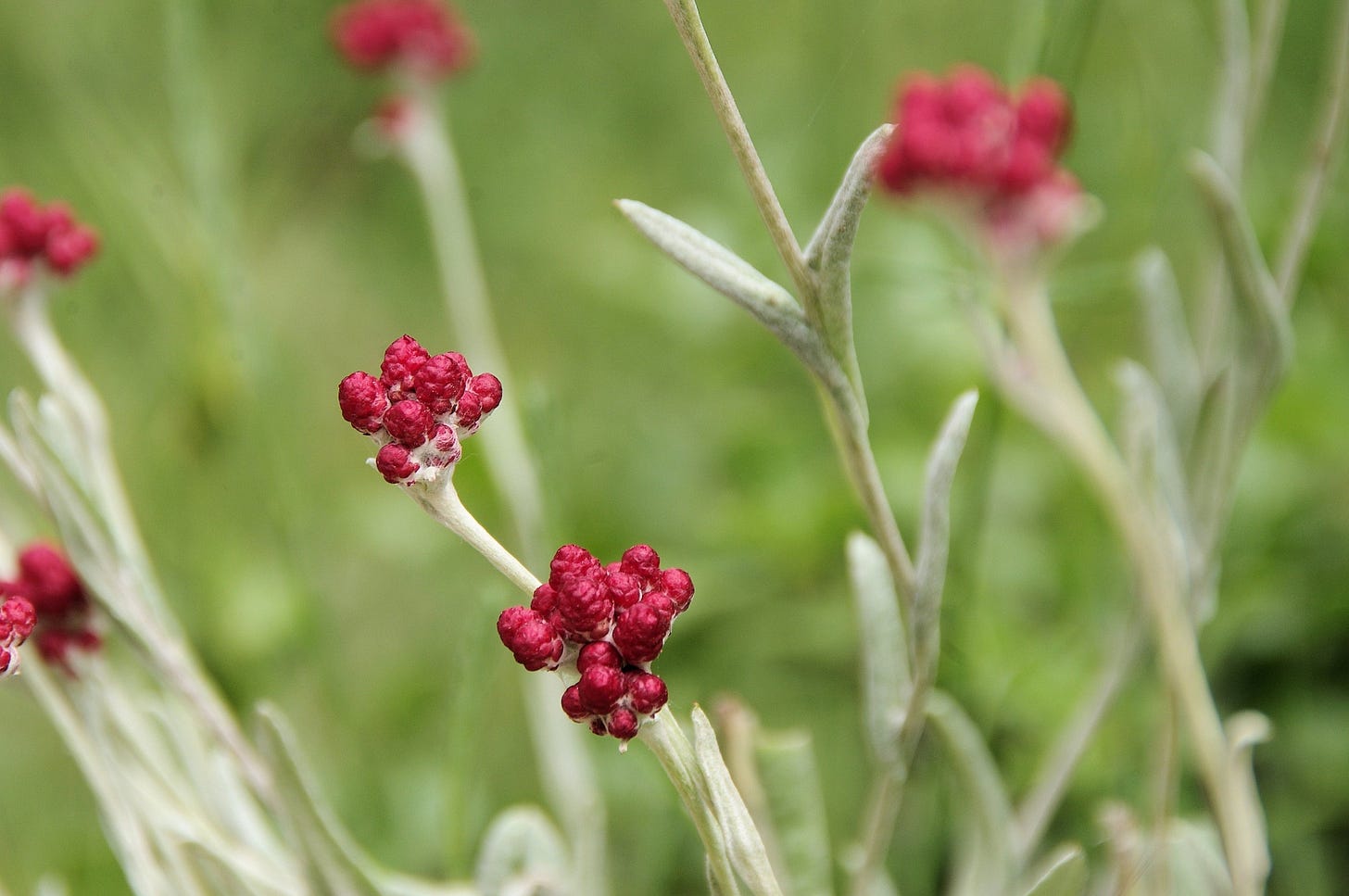The Blood of the Maccabees
The story of a flower that connects ancient Jewish history to modern Israel
When an Israeli committee decided to pick a flower as a symbol for Memorial Day in 1955, they deliberately avoided the poppy. This was because the poppy already possessed such symbolism for the British – whose colonial government had been responsible for the deaths of many Israeli martyrs. Instead, they selected a Levant flower known in English as the red everlasting, Helichrysum sanguineum. It blossoms each year in April during the season of Yom HaZikaron, Israel’s Memorial Day, but the primary reason for its selection was its appearance and its Hebrew name.
In 1917, botanist Ephraim Hareuveni coined the Hebrew name for this species, dam ha-maccabim, which means “blood of the Maccabees.” The plant’s stem culminates in a cluster of reddish balls, resembling drops of blood. Hareuveni related these “drops of blood” to the Maccabees.
The phrase “blood of the Maccabees” was used by writers and speakers who needed to inspire and empower the Jews to fight in defense of their homeland and their lives. They sought to remind their audiences that the blood of the brave Jewish fighters of two thousand years earlier, who had help miraculously restore Jewish sovereignty, was still to be found in the Jews of modern times.
Yitzhak Sadeh, one of the founders of the pre-state Palmach force that fought British colonialism, referred to this flower in a moving poetic letter to his soldiers. In the letter, he mentions Modi’in, the town from which the Maccabees originated, and explains to the young men how the blood of the Maccabees flows through their veins, and how it is this blood which sometimes brings life to the land:
“In the Diaspora our blood was shed like water for many generations, for hundreds of years - in all the lands, in all the environments, but no plant grew out of our blood, no flower flowered, only puddles remained, puddles of blood from lead. And over the years they also dried out. Only in this country, the homeland, does a tiny flower grow amongst the rest of the flowers, the small red flower, and its name is Blood of the Maccabees...
“Here we wandered on the paths of Israel, we breath the air of Modi’in, we have seen the landscape of the bare hills, we climbed the cliffs, we ascended and descended on the paths and the trails on which the Maccabees walked… The spirit of the Maccabees became the Maccabean strategy, and we knew how the few can fight against the many, how they knew when to prevail over the camps. Their spirit became our strategy, their faith became our weapons. Because justice must be realized here, and for us. And not a dream of justice, of an abstract perception about the concept of justice - the justice here needs to be real. It will grow in the fields of wheat, barley and cereal, in the fields which are sown with tears and are harvested with song, and if necessary they are also watered with blood...
“And that same blood, we will say with all straightforwardness and confidence, runs through our blood. In this matter, we are the same as the Maccabees. And a drop of our blood that falls on the land of the homeland will grow into a tiny flower, a small red flower named after them. Because it is due to them that this land is our home and that all types of plants and flowers grow in it.
“You are not heroes, my friends, nor sons of giants, you are simple people, immersed in everyday life, engaged in a thousand matters. But the inheritance of the Maccabees has passed to you.”
(Extracted from my forthcoming book, The Lions of Zion: Biblical Natural History and the Significance of Israel, to be published by the Biblical Museum of Natural History. If you would like to be notified when the book is available, subscribe to our newsletter at www.bmnh.org.il or fill in your details here.)





Not a person. But the zionist movement achieved a קיבוץ גלויות greater than the times of עזרה. That's one task of משיח. So is להלחם מלחמות ישראל. We need חזרה בתשובה and בניין בית המקדש. We can be משתדל for the first and look for opportunities re the second.
What is the connection between the Macabees and those who "fought" for their "homeland"?
During Bayis Sheni no Jews fought to "save" or "free" the "homeland" (except for the biryonim who did it against Chazal's instruction and Bar Koziva who was supported by Chachamim only a s long as he was thought to be b'chezkas moshiach),
while The Macabees never lifted a finger against those who came to rule over the land until they had to fight against the ones who came "לְהַשְׁכִּיחָם תּוֹרָתֶךָ וּלְהַעֲבִירָם מֵחֻקֵּי רְצוֹנֶךָ to cause the Jews to forget the Torah and transgress the mitzvos".
Where is the connection?